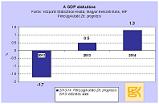| Elérhetőségek |  |
 |
Pénzügykutató
Innovációs Kutató Központ
Korridor
Szalay Kör
Andrássy kör
Hetényi kör
Hetényi kör 2024 évi eseményei:
2024. március 25.
Magyar mezőgazdaság helyzete
előadó: Juhász Pál
2024.április 22.
A magyar gazdaság felzárkózása és pozíció vesztése az Európai Unióban
előadó: Gulácsi Gábor és Kerényi Ádám
2024. április 29.
Az egészségügy helyzete és változtatásának kilátásai.
előadó: dr.Szócska Miklós
2024. május 15.
Privatizáció és tőkepiac
előadó: Csillag István
2024. szeptember 25.
A lerombolt közoktatási rendszer helyreállítása
előadó: Radó Péter
2024. október 16.
A magyar nyugdíjrendszer alakulása (az OECD jelentés értékelése)
előadó: Simonovits András
2024. november 6.
Gazdaság és szociálpolitikai anyag( a már többször megvitatott anyag Katona Tamás által véglegesített formájú szöveg megvitatása)
előadó: Katona Tamás
Lengyel László írásai
-
12/05/2024 - 13:59
-
11/25/2024 - 13:36
-
10/28/2024 - 23:20
-
09/16/2024 - 15:24
-
09/02/2024 - 15:31



